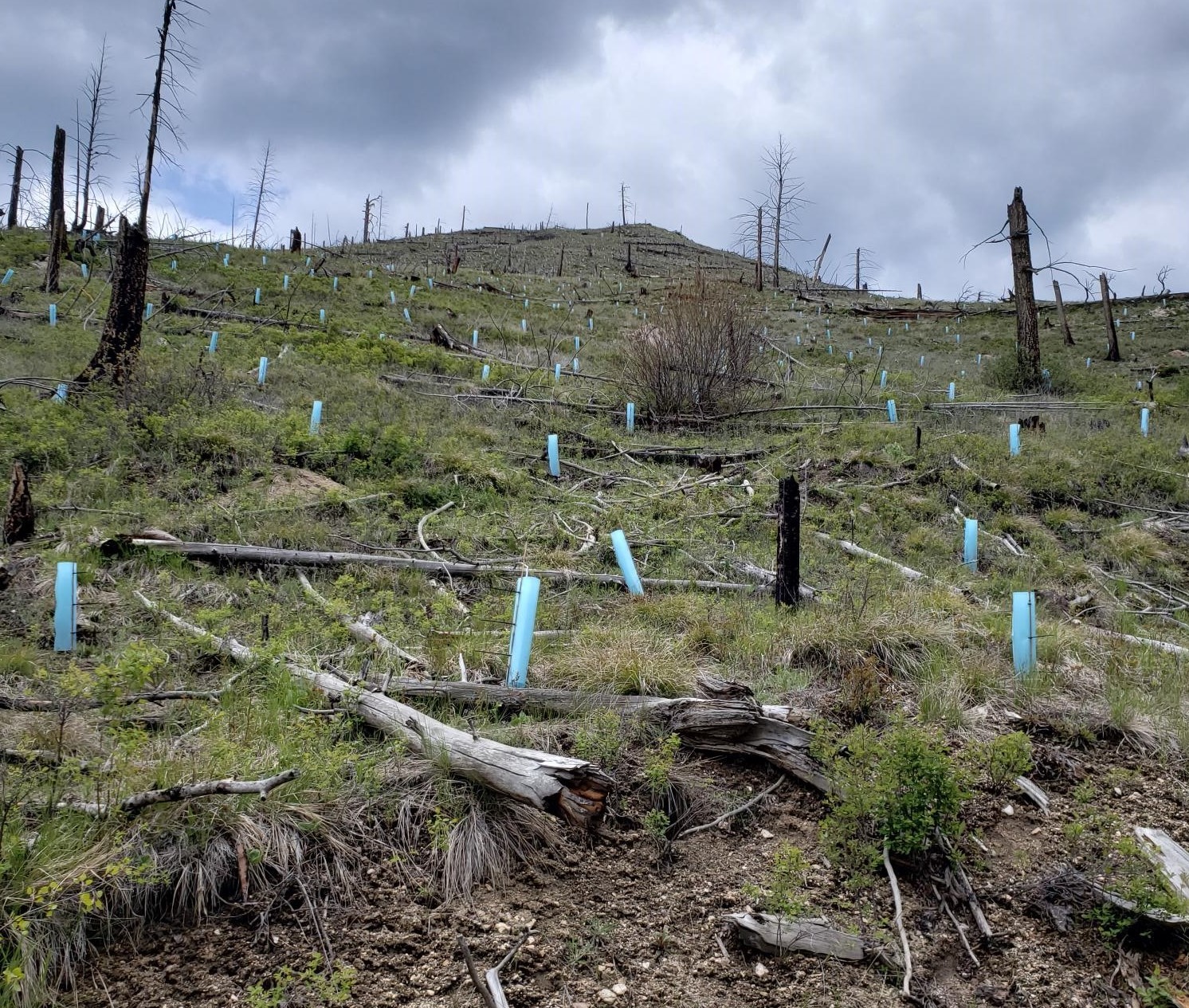Our supporters know that we plant locally sourced, native trees on high need National Forests through our partnership with the U.S. Forest Service, but we often receive inquiries about how and when we plant. Below are five quick facts that may help answer some of your planting questions and demonstrate the measures our agency partner takes to ensure that our trees survive.
Professional Crews Plant Trees Year Round

With such an extensive and wide-ranging geographic space, optimal planting times vary across regions and forests. In the West and Midwest, most of our projects follow an expected timeline, with seedlings packed in the ground in spring. However, some projects in the West may not begin until September or early October. And in the Southeast, the earlier the better. Most of our projects in this part of the country occur in January and February, when soil moisture, humidity, and other conditions are just right for planting.
Conditions Vary Across Project Sites

Along with factoring in seasonal conditions, the Forest Service also considers variables within the same project area, such as species, elevation, and the direction a slope faces. For instance, on a recent project on Oregon’s Deschutes National Forest, crews planted ponderosa pine on the warmer, drier south-facing slopes, and planted a mix of three species more suitable for the cooler, moister soil on the north-facing slopes.
Some Projects Get a Helping Hand (or Hoof) From Horses

A horse packer and twelve mules transporting seedlings to our project site on Okanogan-Wenatchee National Forest
Many of our projects are located one or more miles away from the nearest road, so horses and mules can help transport the hefty seedlings. When planting crews can plant thousands of seedlings in a single day, the extra lift can be very welcome! This was the case on a recent project on Okanogan-Wenatchee National Forest in Washington. During the 11-day project, the equine helpers carried 428 boxes of seedlings totaling more than 19,000 pounds.
Planters Use Natural Microsites

Since many of our projects occur on forests affected by events like wildfire, charred, snapped, and fallen trees may be present when planting crews arrive onsite. Reforestation sites are not very pretty, but planters are sometimes able to put the debris to good use, taking advantage of natural shade, wind cover, and cooler temperatures offered beside a fallen log to help improve seedling survival.
Planters Can Create Microsites

Without the presence of a natural microsite, planters can use man-made protectors to provide extra shelter and enhance seedling survival rates. Shade tubes, such as the ones shown in the photo below, help protect seedlings from excess sun and wind exposure, and provide browse protection from hungry wildlife.
Thanks to the diligent, science-informed methods of the Forest Service, we (and our supporters) can rest assured knowing that our trees are likely to survive and provide the many benefits that make National Forests so special.
Would you like to learn even more about how we plant millions of trees each year? Visit our How We Restore Our Forests page for a step-by-step guide, from post-disturbance assessment to post-planting follow-up.

